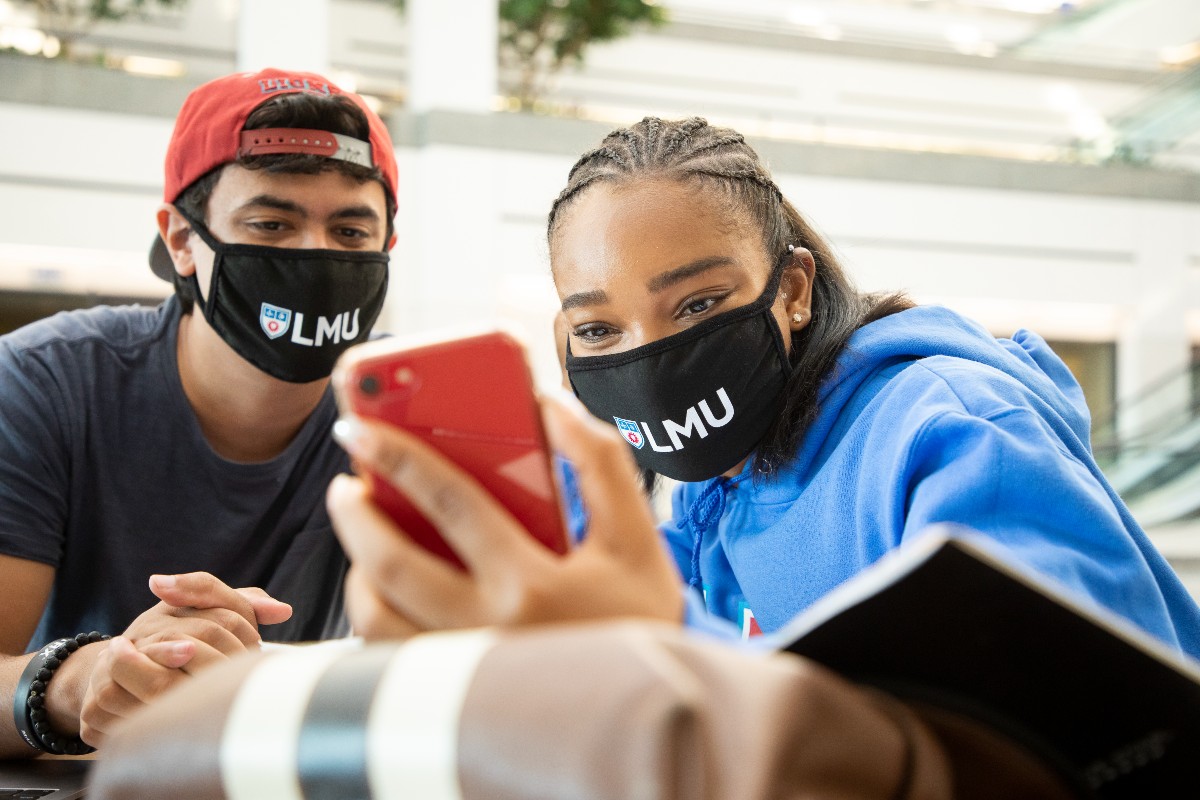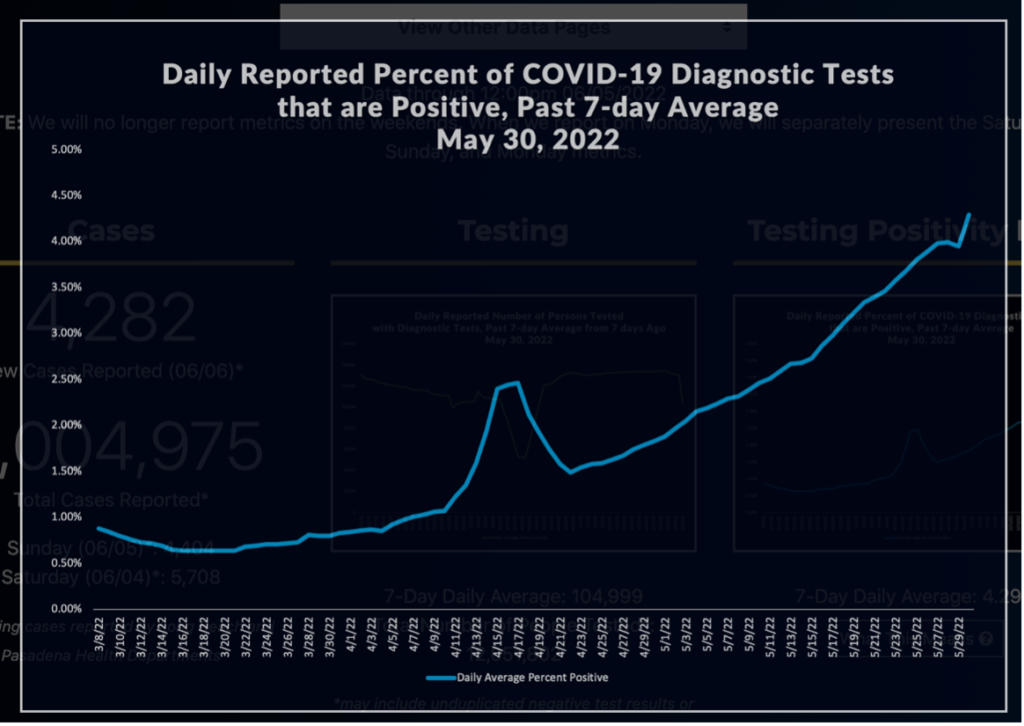
The struggle against coronavirus often seems endless and exhausting: L.A. County reported yet another surge in new COVID-19 cases for the week ending June 5, 2022, raising the threat to public health and requiring renewed efforts to stop the spread of the disease.
This upward trend in cases in L.A. County has prompted LMU to announce a return to mask requirements for learning spaces and indoor gatherings with more than 10 people. Individuals on LMU’s campuses are also strongly urged to wear masks indoors in general, and are reminded that vaccinations and boosters are required for the LMU community; those who are newly boosted or vaccinated should upload their records in Vax LMU.
When the LMU community returned to campus after the 2021 winter break, the reported cases of COVID-19 were troubling but anticipated: January saw 281 new cases, and that fell to 221 in February, then fell again to 63 in March. The cases ticked up in April (165 new cases) and May (130 new cases). L.A. County’s designation is not determined by a daily case count, but by three factors – case rate per 100,000 population; new COVID-19 hospital admissions per 100,000; and staffed in-patients beds occupied by COVID-19 patients – on a seven-day average reported by the Centers for Disease Control each Thursday.
These trends are consistent with what was happening in Los Angeles County:
The trends nationally are consistent, too. The New York Times reports that more than 100,000 cases are currently announced each day in the United States, a figure that captures only a portion of the true toll. In addition to the fact that many cases go uncounted in official reports, current figures are further depressed by reporting delays brought on by the Memorial Day weekend. Cases are increasing in more than half of all states, yet there are signs of improvement in the Northeast and Midwest.
High-profile COVID-19 cases, including Archbishop José H. Romero of the Archdiocese of Los Angeles and Gov. Gavin Newsom, have refocused attention to the spread of the virus, and brought subsequent reminders to stop the spread: wash your hands, maintain a safe distance from others, and wear a mask. LMU/Together provides a host of resources and information about the pandemic and mitigation measures, including information about masks that provide the best protection against COVID-19. LMU continues to provide N95 and surgical masks free of charge.
Public health authorities continue to remind us that vaccinations and boosters remain the most effective tool to prevent severe illness and death. They have also reported that masks are more important now than they were at the start of the pandemic due to the transmissibility of the current predominant subvariant in L.A. County. Across the county, residents and workers are being urged again to wear masks indoors, with some institutions taking stringent measures: UCLA has ordered a mask mandate in indoor settings on campus, the Los Angeles Times reported on May 26. Officials at UCLA said the mask order was needed to avoid disrupting in-person learning and campus activities, including graduation.
The urgency of the new measures is due to a new variant, BA.2, which has spun off a subvariant, called BA.2.12.1. This strain includes a mutation seen in the Delta and Lambda variants that helps the virus latch onto key receptors on human cells “and thus become more transmissible,” write Dr. Carlos del Rio of Emory University and Dr. Preeti N. Malani of the University of Michigan, infectious-disease experts who explain several factors in a commentary published in the Journal of the American Medical Association.
“Now that we are in the third year of the pandemic,” said Devra Schwartz, vice president for safety and security, “more is known about COVID-19 and the protective measures that have proven to be the most effective – namely vaccines, boosters, and masking – as a community we are in a much better position now to control the spread than we were in 2020.”




